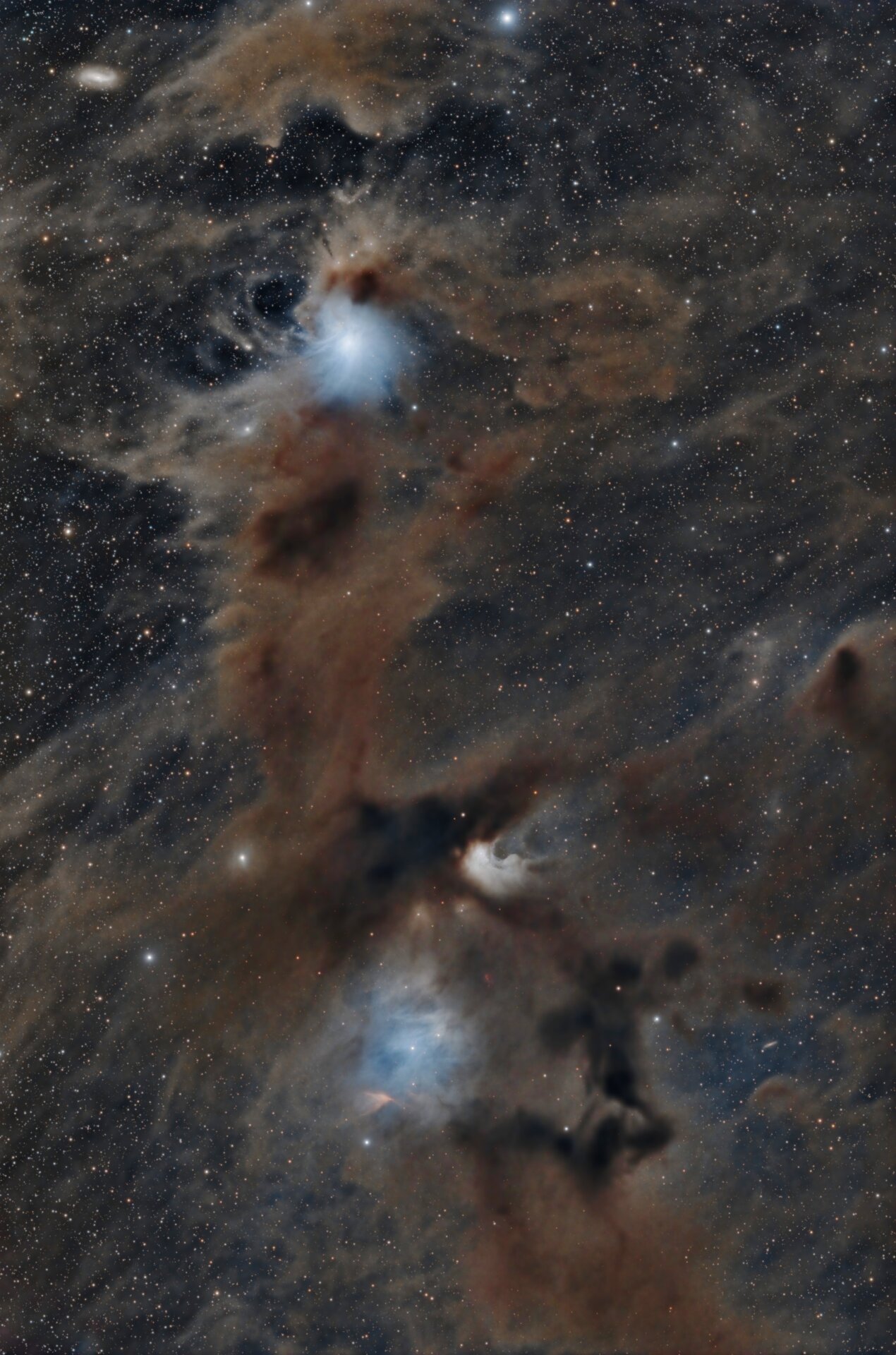
Young stellar objects in the Chamaeleon molecular cloud - 143063
By: Bruce Charlier |
https://nzastrocompetition.com/new-zealand-astrophotography-competition-2024/deep-sky/?cid=322&cac=submission&ctx=page&cm=1&sid=143063
Located very close to the south celestial south pole and only 500 light years away from Earth lies the beautiful, fascinating and enormously busy Chamaeleon molecular cloud complex - one of the closest star forming regions within the Milky Way. This mostly dusty area of dark nebulosity hosts a number Herbig-Haro (HH) young stellar objects, including the conspicuous, orange V-shaped nebula known as the Chamaeleon Infrared Nebula (HH 909A) towards the bottom of this image. Here, a young, cool, low mass star with bipolar outflows is accreting infalling dust and forming a protoplanetary disk. Close to this, Cederblad 111 and 110 are the blue and white reflection nebulae, respectively, both are being illuminated by young low-medium mass blue stars. Yet more HH objects are embedded within the dust between these two regions, including the small fuzzy, deeply red objects HH 49-50 – yet more energetic outflows from young stars. IC 2631 is the bright reflection nebula towards the top of this image and the star responsible here for lighting up this region is a young T-Tauri star. In contrast to all this local activity, NGC 3620 is the splendid barred spiral galaxy in the far distance at the top left of this image, situated around 59 million light years away. The Chamaeleon molecular cloud is a beautiful example of the ongoing processes of the recycling of dust and gas, produced by previous generations of stars to form new stellar objects and protoplanetary systems. Many of the young stars in the Chamaeleon complex are only a few million years old – this was the age of our sun at which the first asteroids and planetesimals started to form within our own solar system. 300s exposures, Red x 53, Green x 52, Blue x 48 = 12hrs 45mins. Takahashi TOA130 with 67 flattener giving f7.6 at 1000mm focal length, ASI6200 MM Pro, Chroma filters, Astro-Physics AP1200GTO CP4. Images made over multiple nights in late 2023 and early 2024 from my solar-powered observatory at Star Field, S. Wairarapa, NZ
Finished since 153 days, 21 hours and 14 minutes.